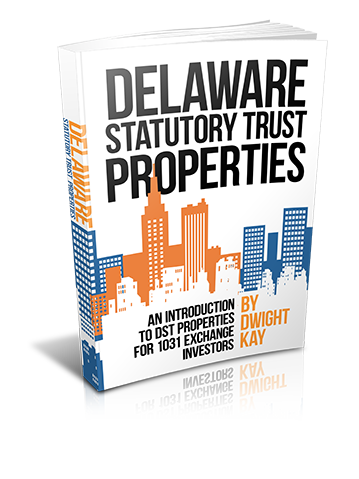BEWARE. Fed Rate Hike Could Burst Bubbles
By Kathy Fettke | RealWealthNetwork.com

The Federal Reserve followed through on its latest promise to raise interest rates. Fed Chief Janet Yellen announced a quarter point hike in the federal funds rate Wednesday. But the increase has little to do with the ripple effect on mortgages and consumer loans, and more to do with a message from the Fed about the economy.
This is the first rate hike of 2017 and the third since December of 2015 when the cycle of monetary tightening began after the Great Recession. The first rate hike brought the overnight lending rate a quarter percent off zero. The second rate hike three months ago, raised it another quarter point. The latest increase brought it to a range of 0.75% to 1%, which is still quite low historically.
Consumer loans may notch up a bit because of the rate hike but economists say with so much talk about the increase, many lenders have already priced it in. And some economists say the hike has more to do with Yellen’s desire to portray the economy as “healthy” than it does with monetary policy.
She said during a press briefing: “We have confidence in the robustness of the economy and its resilience to shocks.” And that: “It’s performed well over the past several years. We’ve created, since the trough in employment after the financial crisis, around 16 million jobs.”
Raising the Fed Fund rate is supposed to correspond with a robust economy. Increases are meant to keep inflation in check. If economic growth and inflation are rising too quickly, a rate hike helps slow them down as it tightens the money supply.
Core inflation is about 1.9% right now. Up slightly from the previous forecast and right in the 2% range that the Federal Reserve has been targeting.
But there are big questions about U.S. economic growth.
If you focus on the stock market, you might think the economy has been advancing rapidly. Wall Street has been on a bull run since President Trump was elected with the Dow hitting over 21,000 for the first time ever.
There’s also been a steady increase in jobs with unemployment dropping from the double digits during the recession to under 4.7% right now. That’s giving consumers confidence about the economy, despite flat wages. The February report on consumer confidence says it hit a 15-year-high of 114.8.
But what some economists are pointing out is the troubling lack of economic growth. Chief investment strategist at Clarity Financial, Lance Roberts, wrote in a blog, that: “Outside of inflated asset prices, there is little evidence of real economic growth.” And that’s one thing that Janet Yellen said a rate hike would be tied to — economic growth.
The gross domestic product, or GDP, is our economic report card. And the Atlanta Fed just downgraded the first-quarter GDP to just .8%. That’s well off the 2% that Janet Yellen said is needed for a rate hike, leaving some economists wondering why the central bank went ahead and approved the increase.
Just weeks ago, the GDP was closer to the central banks rate hike comfort zone, at 2.3%. It also increased to 3.4% briefly last month after positive news about manufacturing and construction spending. But when disappointing data on retail sales and consumer prices came out a few days ago, the Atlanta Fed lowered its estimate to the .8% level.
Roberts says that charts show a rate hike at a time like this could actually push us into another recession. He told Market Watch that raising interest rates from ultra low levels at a time of slow economic growth could impact spending and that charts show this type of situation has lead to recessions in the past within three to nine months.
Nobel Prize-winning economist Robert Schiller is also warning people that Wall Street exuberance has gone overboard. He told Bloomberg that traders are captivated by President Trump’s bold plans to slash regulations, cut taxes, and “turbo-charge” the economy with an infrastructure building-boom.
He warns that when situations like this have happened in the past, it hasn’t ended well for the investors. Think dot-com bust and housing meltdown. Both experienced sharp drops in the stock market.
Schiller says investors are shoveling money into the market with the hope that President Trump will make good on his campaign promises. But they are also ignoring the enormous amount of uncertainty associated with getting those new policies through Congress and the legal system.
The Trump Administration is proposing some extreme budget cuts that may not sit well with some of his own constituents. A preliminary budget was introduced that slashes $54 billion from most federal agencies including the EPA, HUD, and Health & Human Services. That money will then be spent on defense. There’s also the affect of the Obamacare repeal. Depending on how many people lost their healthcare coverage, there could be a lot of unhappy voters. And if this political turmoil jostles the stock market, we could see a reversal that could happen quickly, and without mercy.
There has never been a slow letting out of air from a bubble. It usually bursts.
Kendrick Wakeman, the CEO of financial technology and investment analytics firm FinMason, told CNBC that investors are in for a rude awakening. He says no one knows when the stock market correction is coming. But, he says on average, the stock market crashes every eight to 10 years. And when it does, the average loss is about 42%.
He told CNBC that stock market investors need to ask themselves: “Would you hang yourself in the closet if the market crashed and you lost 35 percent?”
I have been warning investors for over a year now that a recession is coming. I’m sure some people think I’m crazy since the stock market has made significant gains since I gave this warning.
But remember, the same thing happened before the Great Recession and the Great Depression. In January of 2008, Ben Bernanke, the Chairman of the Fed said, “The Federal Reserve is not currently forecasting a recession.” 9 months laterin September of 2008, Lehman Brothers collapsed and the financial markets worldwide came tumbling down.
The Federal Reserve is supposed to be in charge of regulating the economy. It’s terrifying that they couldn’t see that recession coming… and even more frightening that they may have seen it coming, but didn’t warn us.
Be extremely defensive in your investing strategies today. Make financial decisions as if it were 2006. People who were prepared fared very well during the subsequent recession.
Rising interest rates can be the exact prick needed to pop the stock market bubble. That may be the very reason the Fed is raising rates – to slow down the irrational exuberance that taking the bubble to new heights.
A slowdown could turn into a meltdown, depending on how big that bubble has become.
How would a slow down in stocks affect real estate?
1. Cities that are more dependent on stock market fluctuations would be more affected by a stock market crash (SF, NY, Seattle).
2. Mortgage interest rates would decline if there were a correction in the stock market as more investors flock to the safety of bonds – which are more tied to the 10 year Treasury bond market.
3. Commercial real estate would get hammered while landlords could fare well as more people are forced to rent, driving rents up.
Now would be a very good time to “cash out” and sell your high priced assets while the market is hot. You can exchange those properties for low-priced, high cash flow properties in recession-proof markets.
If you have concerns about your portfolio or would like to speak with one of our investment counselors about how to find out which markets are best for investing today, visit www.RealWealthNetwork.
 Kathy is an active real estate investor, licensed Realtor, certified coach, and former mortgage broker. She specializes in helping people build multi-million dollar real estate portfolios through creative finance and planning. With a passion for researching and sharing the most important facts on real estate and economics, Kathy is a frequent guest expert on such media as CNN, CNBC, Fox News, NPR, CBS MarketWatch and the Wall Street Journal. She is the author of the #1 best seller, Retire Rich with Rentals, and is host of The Real Wealth Show – which is a featured podcast on iTunes with listeners in 27 different countries.
Kathy is an active real estate investor, licensed Realtor, certified coach, and former mortgage broker. She specializes in helping people build multi-million dollar real estate portfolios through creative finance and planning. With a passion for researching and sharing the most important facts on real estate and economics, Kathy is a frequent guest expert on such media as CNN, CNBC, Fox News, NPR, CBS MarketWatch and the Wall Street Journal. She is the author of the #1 best seller, Retire Rich with Rentals, and is host of The Real Wealth Show – which is a featured podcast on iTunes with listeners in 27 different countries.







